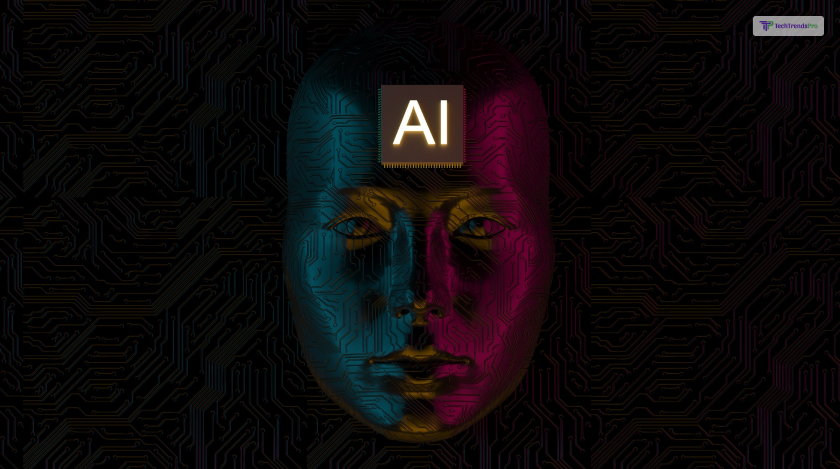
A delicate balancing act emerges in the mesmerizing landscape of artificial intelligence, where the future unfolds before our eyes. We stand at the crossroads of innovation, staring into the promises, perils, or dangers that AI brings.
As we venture deeper into this technological marvel, it becomes critical to understand the dangers of AI to solve the complexities that lurk beneath the surface.
If you fear what AI might do to us, I have you covered! In this comprehensive article, I will discuss all the good and bad things about artificial intelligence. So, if that is what you are searching for, I have you covered!
Therefore, keep on reading this blog till the end to learn more…
The Promise of Progress
Before diving into the potential pitfalls, let’s acknowledge AI’s undeniable strides. The future of AI holds the promise of unparalleled progress, reshaping industries and transforming how we live and work.
In other words, from enhancing healthcare diagnostics to optimizing logistics, the positive impact of AI reverberates across various sectors.
Visionary AI companies lead the charge, driving innovation and pushing the boundaries of what’s possible. These companies serve as the architects of our AI-powered future, creating solutions that streamline processes, amplify productivity, and sometimes redefine entire business models.
In essence, the collaboration between humans and AI is a testament to the symbiotic relationship shaping the tech landscape.
Navigating the Dark Alleys: Dangers of AI
Yet, for every glimmering promise, shadows loom. The dangers of AI weave a cautionary tale, prompting us to tread carefully in this realm of artificial brilliance.
1. Ethical Quandaries and Bias
Firstly, as AI algorithms evolve, ethical concerns and biases come to the forefront. The decisions made by AI systems are only as unbiased as the data they’re trained on.
Besides, unintentional biases in training data can perpetuate discrimination, raising questions about the ethical implications of AI-driven decision-making in critical areas like hiring, lending, and law enforcement.
2. Loss of Jobs and Economic Disparity
Secondly, the surge in automation fueled by AI has ignited fears of job displacement. Additionally, while AI promises efficiency, it also threatens certain job markets.
Striking a balance between technological advancement and maintaining employment opportunities becomes a critical challenge. Above all, a future where AI exacerbates economic disparities is a looming danger that warrants strategic consideration.
3. Cybersecurity Vulnerabilities
Thirdly, the interconnected nature of AI systems opens the door to cybersecurity vulnerabilities. As AI becomes integral to critical infrastructure, the potential for cyberattacks intensifies.
Safeguarding against malicious exploitation and ensuring the resilience of AI systems against evolving threats must be a priority on the path to the future.
4. Autonomous Weapons and Security Risks
Lastly, the emergence of autonomous weapons equipped with AI capabilities raises profound security concerns.
The unchecked development of AI-powered weaponry poses threats beyond the scope of conventional warfare, demanding a global conversation on regulations and ethical boundaries.
Striking the Right Chord: A Balanced Approach
The key to navigating the future of AI lies in embracing a balanced approach. As we ride the waves of innovation, it’s crucial to proactively address the dangers, ensuring that the promises of AI benefit society at large.
1. Robust Ethical Frameworks
Firstly, establishing robust ethical frameworks is imperative to mitigate ethical concerns and biases. Transparency in AI decision-making processes, ongoing scrutiny, and a commitment to fairness can help build trust in AI systems.
2. Reskilling and Upskilling Initiatives
Secondly, as jobs evolve in the wake of automation, reskilling and upskilling initiatives become crucial. Empowering the workforce with the skills needed in an AI-driven landscape fosters adaptability and counters the threat of job displacement.
3. Cybersecurity Vigilance
Thirdly, when it comes to cybersecurity, vigilance is the cornerstone of defense. Implementing stringent cybersecurity measures, fostering collaboration between industries and governments, and staying one step ahead of potential threats can fortify AI systems against vulnerabilities.
4. International Collaboration on AI Governance
Lastly, addressing the global challenges posed by AI requires international collaboration on governance. Besides, establishing ethical standards, defining boundaries for AI applications, and fostering a united front against the misuse of AI technologies form the bedrock of responsible AI development.
A Glimpse into the Future: Best AI Chatbots
Amidst the discourse on dangers and promises, we find AI chatbots emerging as quintessential players in reshaping user experiences.
Additionally, the best AI chatbots seamlessly blend human-like interactions with efficiency, offering a glimpse into the future of customer service, virtual assistants, and personalized interactions.
These digital conversational agents are not just tools for answering queries. Besides that, they also represent the forefront of user interaction, revolutionizing customer service, virtual assistance, and personalized engagement.
1. Google’s Meena
Firstly, Meena, developed by Google, is a chatbot that strives for the nuances of human conversation. Its advanced natural language processing capabilities enable it to engage in context-aware, free-flowing dialogues. Meena sets the bar high for chatbot sophistication, offering a glimpse into a future where interactions with AI feel remarkably human.
2. Facebook’s ChatGPT
Second on this list is Facebook’s ChatGPT. It represents a significant stride in creating dynamic and open-ended conversations. It leverages reinforcement learning from human feedback (RLHF) to enhance its responses. Additionally, the ability to generate contextually relevant and coherent replies showcases the potential of AI chatbots to foster meaningful interactions.
3. OpenAI’s GPT-4
Thirdly, as the successor to GPT-3, OpenAI’s GPT-4 continues to redefine AI language models’ capabilities. With its vast understanding of context and diverse applications, GPT-4 stands as a testament to the evolution of chatbots. Furthermore, it comprehends queries and generates contextually rich and coherent responses, making interactions more seamless.
4. Microsoft’s XiaoIce
XiaoIce, developed by Microsoft, exemplifies the integration of AI into social interactions. Initially launched in China, this chatbot has expanded its reach, engaging users in emotionally intelligent conversations. Furthermore, XiaoIce showcases the potential of AI to not only provide information but also offer companionship and emotional support.
5. IBM’s Watson Assistant
Lastly, Watson Assistant from IBM exemplifies the practical application of AI in business contexts. It empowers businesses to create sophisticated chatbots tailored to their needs. Besides that, it also enhances customer interactions, streamlines processes, and provides valuable insights by understanding user intents and delivering relevant responses.
Wrapping It Up!
In the grand world of AI’s evolution, striking the right chords requires a delicate balance. Besides, the future of AI teeters on the edge of unprecedented progress and potential pitfalls.
By addressing the dangers head-on, embracing ethical principles, and fostering collaboration, we can steer this technological juggernaut toward a future where the promises of AI unfold responsibly. Furthermore, this will benefit humanity and shape a world where innovation harmonizes with ethics.
Read Also:






